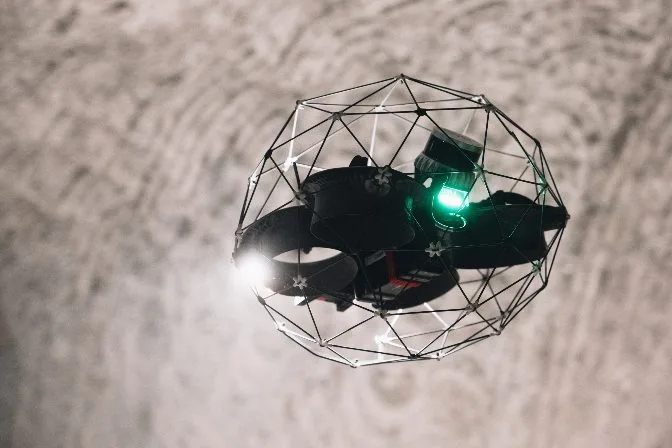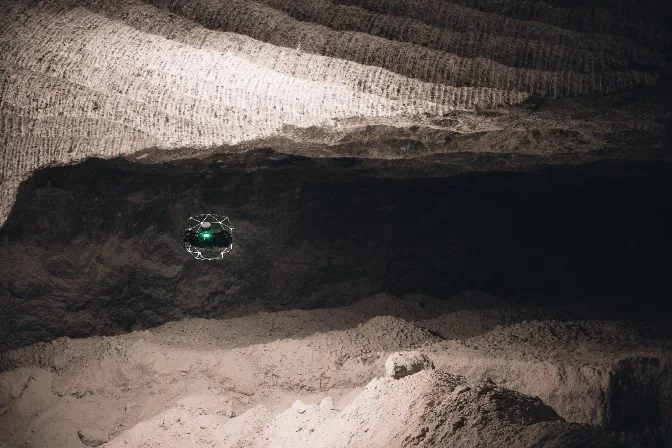A Guide to How Drones are Used for Inspections
# A Comprehensive Guide to Drone Inspections Across Industries
In recent years, drone inspections have emerged as a transformative solution across numerous industries that rely on visual assessments for maintenance. By deploying drones to collect visual data, businesses can eliminate the need for personnel to engage in risky tasks, such as climbing tall structures or navigating confined spaces.
Drone inspections are reshaping traditional inspection methods, allowing for faster data collection while minimizing exposure to hazardous environments. Imagine an inspector needing to ascend a towering cell phone mast to examine a guy-wire. Now, thanks to drones, this task can be accomplished swiftly and safely, with the drone capturing all necessary visuals. Similarly, inspecting an industrial boiler can involve ascending heights of over 50 feet using scaffolding. However, drones can now navigate these confined spaces, offering comprehensive visual data.

*An Indoor Inspection Drone: Elios 3*
This guide delves into the best drones for inspections, the goals of aerial data collection services, and the advantages of adopting drones for inspection purposes. We’ll also explore the diverse industries utilizing drones for their inspection needs and touch upon career opportunities in the drone sector.
## The Best Inspection Drones for Every Job
Selecting the optimal inspection drone hinges on the specific requirements of the task at hand. The market boasts countless drones, each designed with unique features tailored to specific industries or applications. For instance, large-scale land surveys may benefit from fixed-wing drones with extended flight durations to maximize operational efficiency. Conversely, in windy or low-altitude environments, agile multi-rotor drones prove more suitable for navigating obstacles and resisting unpredictable winds.
When operating in confined spaces, durability becomes paramount. Drones must withstand unpredictable conditions such as dust, limited visibility, and minor collisions. In these cases, a robust drone like the Elios 3 is ideal. Equipped with a LiDAR sensor and a 4K camera, this specialized drone excels in rugged environments, from cement silos to underground mines.
## What Is a Visual Inspection and Why Does It Matter?
A visual inspection involves a meticulous examination of every component of an asset, typically conducted with the naked eye. Often, drones serve as the inspectors’ eyes, capturing visual data that is later reviewed in detail. While some analysis occurs on-site, the bulk of the inspection work happens post-data collection.
For instance, inspecting a cell phone tower manually may necessitate climbing multiple stories to assess guy-wires. Similarly, internal inspections of boilers or pressure vessels demand climbing scaffolding or ropes. Visual inspections are vital for maintaining asset integrity. Addressing small issues like loose rivets is far more economical than replacing an entire structure. Beyond cost savings, these inspections are essential for safety, preventing potential disasters like pressure vessel explosions.
### Not All Drone Inspections Are Visual
Although most drone inspections are visual, drones can be equipped with advanced sensors to perform non-visual inspections. For instance, in agriculture, drones are fitted with multispectral sensors to capture images of crops across different spectral bands. In HVAC inspections, thermal cameras are mounted to detect heat leaks. Specialized drones can carry multiple payloads to adapt to varying environments. The Elios 3, for example, can carry RAD sensors for radiation detection, LiDAR scanners for surveying, and ultrasonic thickness payloads for precise measurements.
## Where Inspections Fit in the Maintenance Process
Before diving into industry-specific drone applications, it’s essential to understand how inspections fit into the broader maintenance process. Typically, maintenance follows an inspection phase. First, inspectors assess the asset’s condition, and if repairs are needed, they are carried out. Drones excel in the initial inspection phase by eliminating the need for personnel to enter hazardous zones like chimneys or cell phone towers.

Even when drones identify issues requiring manual intervention, the cost-saving potential remains significant. Building scaffolding for manual inspections is expensive and time-consuming. By reserving scaffolding only for necessary repairs, companies can reduce maintenance expenses by up to 80-90%. Additionally, drones reduce downtime and liability insurance costs by minimizing personnel exposure to dangerous situations.
## The Benefits of Drone Inspections
Drone inspections offer numerous advantages:
- **Reduced Risk**: Eliminate the need for personnel to engage in dangerous tasks.
- **Cost Savings on Temporary Structures**: Avoid the expense of scaffolding and similar infrastructure.
- **Time Efficiency**: Reduce downtime for assets like nuclear power plants or pressure vessels.
- **Lower Liability Insurance Costs**: Decrease insurance premiums by reducing personnel exposure to hazardous conditions.
- **Improved Safety Through Increased Inspections**: Enable more frequent inspections, catching issues earlier.
- **Enhanced Records**: Maintain a detailed digital history of an asset’s condition over time.
For more insights on how drones enhance safety, check out this article from Bloomberg News.
## Inspection Standards and Formal Inspection Bodies
Many industries that handle potentially hazardous assets conduct inspections due to legal requirements. These standards are often set by industry-focused associations like the API (American Petroleum Institute) or ASME (American Society of Mechanical Engineers). Formal inspection bodies, private firms that train and certify inspectors, oversee these inspections to ensure compliance.
## Drone Inspections Across Industries
Let’s explore how drones are transforming inspections across various sectors:
### Agriculture
Drones are increasingly utilized in agriculture for crop monitoring, livestock observation, and creating 3D maps of farmland. By providing real-time insights into crop health, drones enable precision agriculture practices that boost yields and save time.
### Chemical Industry
In the chemical sector, drones reduce exposure to harmful substances and cut costs associated with scaffolding. Assets such as pipe racks, fermenter tanks, and storage silos are routinely inspected using drones.
### Construction
Construction firms leverage drones for site monitoring, progress tracking, and safety assessments. Drones facilitate regular reporting, enhance efficiency, and prevent costly delays.
### Infrastructure & Utilities
From bridges to wind turbines, drones provide rapid, accurate assessments of infrastructure. Regular inspections help maintain safety and operational efficiency.
### Power Generation
Drones revolutionize inspections of power plants, transformers, and solar farms. By reducing risk and costs, drones ensure reliable energy supply.
### Mining
Mining operations use drones to inspect stopes and conveyor belts, enhancing safety and uncovering untapped resources.
### Oil & Gas
Drones inspect storage tanks, refineries, and offshore rigs, ensuring compliance and safety.
### Public Safety
Law enforcement employs drones for search-and-rescue missions, crime scene analysis, and disaster response.
### Maritime
In the maritime sector, drones inspect ballast tanks, hulls, and cranes, ensuring compliance with international standards.
### Sewer & Water Treatment
Specialized drones inspect sewer networks and treatment plants, improving safety and maintenance efficiency.
## The Future of Inspection Drones
As industries continue embracing drone technology, the possibilities are endless. From enhanced safety to unprecedented data collection, drones are reshaping how we approach inspections. Stay ahead of the curve by exploring this dynamic field today!
Ready to launch your drone career? Start by researching industries that utilize drones for inspections!
Jiangsu Bailite Transmission Technology Co., Ltd , https://www.zsindustrialbelt.com
